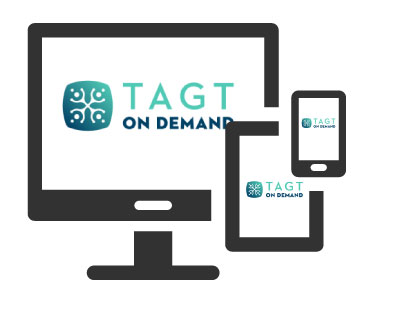Are you being forced to pick between an apple and an orange?

(A look at Lisa Van Gemert’s course, Differentiation in the Real World)
Ok, maybe the old apple/orange comparison is a little tired. So which is better, a scrambled egg or a boiled egg? What’s better, an apple or an orange?
The question is, of course, a false dichotomy! Scrambled, boiled, poached, fried; One is not better than they other. They look different and you might prefer one, but one type is not intrinsically better.
The same thing is true of our students. In any given classroom you are likely to have a-typical, typical, and struggling learners. These variations are real, and they exist without hierarchy.
Using a combination of neuropsychology, pedagogy, humor, technology and sheer fun, Ms. Van Gemert helps educators of gifted students sharpen their skills. A former teacher, school administrator, and now consultant and Mensa member, Ms. Van Gemert uses the experiences she gleaned in schools and her journey through “Giftedland” to help you effectively accomplish your goals in the classroom.
“Differentiation is about meeting kids where they are.”
Differentiation happens in your classroom whether you participate or not. Even in a gifted classroom, students arrive on a variety of levels. “Not responding to the student is a response,” explains Ms. Van Gemert. “There’s no neutrality in differentiation, the only question is, ‘What’s your response going to be?’”
Three keys to success
Differentiation doesn’t have to take a ton of time if you follow a few key tips.
- Start your planning with our most able learner in mind… This saves a lot of time. From there, add scaffolding or evaluate what you need to take away to support your typical or struggling learner.
- You do not need 30 lesson plans! Most teachers only need three different versions and they don’t have to be vastly diverse. Differentiation doesn’t mean that in a class of 30 students, you have them going in 30 different ways.
- Start from where you are now. If you’re not really engaging in differentiation strategies now, pick one or two ideas, then build on that over time. . Then build on that over time.
Create an environment that supports every learner
 The classroom environment is one of the easiest ways to differentiate. You don’t need to spend a ton of money or have over-the-top decorations. Focus on such items as where students sit, what they are seeing, and how your classroom is physically oriented. Centers, posters, prints, and magazines are other ways you can add contrast to the classroom. Set up an environment where differentiation is safe by providing opportunities for students to engage in work at various skill levels.
The classroom environment is one of the easiest ways to differentiate. You don’t need to spend a ton of money or have over-the-top decorations. Focus on such items as where students sit, what they are seeing, and how your classroom is physically oriented. Centers, posters, prints, and magazines are other ways you can add contrast to the classroom. Set up an environment where differentiation is safe by providing opportunities for students to engage in work at various skill levels.
Ms. Van Gemert provides simple, practical, and effective options for differentiating your classroom environment.
“Some high school classrooms are like sensory deprivation tanks. You can breathe new life into a classroom by adding posters.”
Offer multiple options for taking in information,
don’t just offer more information
American education is dominated by the concept that students at a certain age and grade should be performing at certain levels. However, that isn’t always the case. We need to be providing content that matches a student’s ability, rather than forcing a student with advanced abilities to do more work. Content differentiation strategies include:
- Pre-Assessment: Find out what students know
- Add depth and complexity through the use of icons
- Differentiate by student interest
In addition to environment and content, this course covers the learning process and strategies for product differentiation. Throughout the course, Ms. Van Gemert provides actual differentiation strategies and tools you can use in your classroom.
“There really are no shortcuts to anywhere worth going in life. If you want to be a master teacher you are going to have to invest yourself in figuring out how to do this in a way that works for you.”
As an added bonus, Ms. Van Gemert shares some of her favorite, underutilized teaching tools, including:
- ScreenCast-O-Matic (found at http://screencast-o-matic.com) – Capture a video of whatever is happening on your computer screen and include voice over as you record
- Timer Slides in Powerpoint – Use timed Powerpoint slides to count down time for students whether it’s for breaks, center time, or any other timed event. Visit http://giftedguru.com for templates and downloads.
Practical Professional Development for Every Teacher
Although this course is particularly targeted to teachers working with G/T students, the principles and resources that you’ll learn apply to all levels of learning. You’ll often hear Ms. Van Gemert say, “We know that G/T stands for not only ‘Gifted and Talented’ but also just ‘Good Teaching’”.
This course is the perfect alternative to get your 6-hour update!
You just experienced 6 hours condensed into this short article. Of course this article isn’t enough to dig deep on the subject of differentiation for your gifted classroom.
However, if you’re looking for an alternative to face-to-face training for your 6-hour update in gifted education, this is it!
Click here to get all 5 modules
 Delivering Quality Training – No Matter Where You Are
Delivering Quality Training – No Matter Where You Are
Did you know that this course is mobile ready? That means you can complete the course on your smartphone, tablet, laptop, desktop computer, or any other mobile device!
Photos Courtesy of flickr via Rmgirardin and ilmicrofono.oggiono
